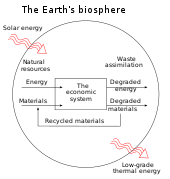Weak and strong sustainability are terms that have emerged from the field of environmental economics and describe opposing approaches to sustainability, specifically in relation to natural resource management and economic development. Weak sustainability argues that natural and human capital are interchangeable, meaning that the use or loss of natural capital can be considered sustainable if the human capital meets or exceeds the value of the natural capital. It assumes that different types of value can be measured and given value in the same way. Strong sustainability argues that natural capital should be maintained or enhanced independently of human-made capital. It considers that certain natural assets are incommensurable and have critical ecological functions that cannot be substituted by human-made alternatives.
For example, according to weak sustainability, replacing a natural forest with a park or agricultural land can be considered sustainable if the recreational or economic value equal the value of the biodiversity lost and further environmental impact caused. According to strong sustainability, cutting down trees in a natural forest and planting new trees elsewhere cannot be considered sustainable, as the value of biodiversity was lost and wider ecological implications cannot truly be measured or offset.
One of the first pieces of work to discuss these ideas was "Blueprint for a Green Economy" by Pearce, Markandya, and Barbier, published in 1989.[1] This work laid the foundations for further discussion on the substitutability of natural capital (e.g., forests, water, and clean air) and human-made capital (e.g., buildings, machinery, and technology), and the implications for long-term ecological and economic health.
- ^ Pearce, David W.; Markandya, Anil; Barbier, Edward (1989). Blueprint for a green economy. Great Britain. London: Earthscan. ISBN 978-1-85383-066-2.

